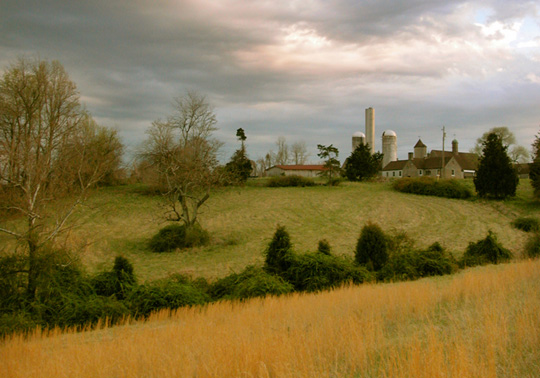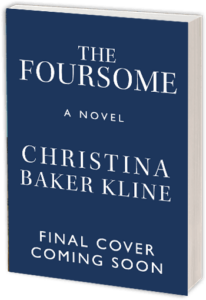When novelist Laurie Albanese and art historian Laura Morowitz began collaborating on a novel about the 15th-century painter Fra Filippo Lippi, they discovered that their biggest challenge was to make the truth seem believable. Laurie Albanese explains:
 When my good friend Laura first handed me a book of Fra Filippo Lippi’s 15th-century paintings three years ago, she opened the door to a world as intriguing as it was unknown to me.
When my good friend Laura first handed me a book of Fra Filippo Lippi’s 15th-century paintings three years ago, she opened the door to a world as intriguing as it was unknown to me.
The paintings and frescoes were vivid and arresting: A stunning blonde Madonna surrounded by irascible young angels who looked as if they’d been plucked from the cobbled streets of Florence. A cloaked man handing an infant to a maid in a hidden doorway, two women whispering to one another as John the Baptist’s head was carried into the room on a platter.
“They had a love affair,” Laura said. “Fra Lippi, the painter-priest, and the young nun who posed for the Madonna painting.”
Laura brought years of art history scholarship, boundless energy and skills, and a zest for research to our collaboration for our novel The Miracles of Prato. But the task of the novelist is markedly different than that of the historian.
Imagining myself in Fra Lippi’s Prato 1456 studio, I was faced with a variety of challenges: First, to conceive and convey the internal life of a man who was both a celebrated painter and a scandalous monk. Second, to put myself into his mind as he created the enduring fresco series in Prato that reflected his inner and external turmoil, his natural talent, his faith, his pride, his arrogance and his fears. Third, to understand how Fra Lippi, an orphan who’d been sent to a Carmelite monastery before his tenth birthday, might feel about the church as his protector, his sustainer, and his jailer … not to mention how he might actually find the place, the time, the nerve and the charm to successfully seduce a beautiful young nun.
Sometimes truth is stranger than fiction: Lippi had done things that were implausible and even unimaginable. But he’d really done them, and so we had to make them seem believable.
Laura and I had no diaries, no journals, only a few scant letters, and no definitive record of the painter’s life. Everything but the barest outline of the story had to be invented.
It was equally challenging to imagine what would drive the gorgeous Lucrezia Buti into the arms of a painter-priest who was twice her age and nowhere near as attractive. What would compel her to risk scandal and scorn? How would she deal with the opposing tugs of sin and virtue, love and duty? We could hardly ignore the fact that in Renaissance Italy, as elsewhere in Europe at that time, a woman had few options once she left her father’s home: she could be a wife, a nun, or a whore. Lucrezia Buti would not have been in a position to envision any other trajectory for her life. And yet, she found one.
In literary fiction, plot grows out of character. If your readers don’t believe that your characters would act the way you’ve imagined them acting, your novel will be as thin as a piece of deli Swiss cheese, and as full of holes.
Laura and I wrote long, imagined histories for Fra Lippi and Lucrezia – passages from their childhoods, stories and details that never made it into the book but that allowed us to get to know them better. We wrote lengthy scenes of internal dialogue and reflection, trying to puzzle out what they might have been thinking – this nun and this priest – when they recognized their mutual attraction.
We studied Fra Lippi’s paintings for clues to his psyche. To imagine his young life, we visited a monastery in New Jersey and the Santa Maria del Carminchurch in Florence where Lippi had lived and studied under the famed early Renaissance painter, Masaccio.
For clues to Lucrezia’s interior and exterior reality, we read up on daily life in Florence and devoured a nonfiction book, Iris Origo’s The Merchant of Prato, based on the life of a prosperous 13th century Pratese, Francesco Datini, then visited Datini’s well-preserved palazzo (now a museum and archive) in Prato. We imagined we were nineteen again, with all the hopes and aspirations a nineteen-year-old girl might have for a happy future that is suddenly snatched away.
We climbed to the top of the bell tower in the Cathedral of Santo Stefano – the same bell tower that stood over the city when Lucrezia and Lippi lived there. We would have liked to visit the Convent Santa Margherita and Lippi’s studio, but those places have been swallowed by time and so we had to build them in our minds and map them out on paper, literally drawing out the convent grounds as we imagined them, acting as architects for Lippi’s simple studio quarters – the kitchen hearth here, the curtain across his studio chamber there, the sack of egg yolks, chemicals and powdered dyes for mixing paints on a crude wooden shelf beside his easel.
At some point we began thinking in archetypes: Fra Lippi as the passionate, tormented artist and Lucrezia as the vulnerable virgin beauty. From there we invented two other fictional characters who rounded out the dramatic action and also served as counterpoints to our characters.
These were Sister Pureza – a wise woman/crone – and Prior General Saviano, a corrupt patriarch. We gave Pureza an herb garden to tend, and Saviano an appetite for rich wines and other things. (I spent many pleasant afternoons wandering the paths of the medieval medicinal garden at the Metropolitan Museum of Art’s Cloisters in the Bronx.)
Once we knew that Lucrezia loved blue silk and had learned the art of silk dying from her father; that Fra Lippi understood the relationship of sinew, muscle, bones, flesh and spirit from early years in his father’s butcher shop; that Sister Pureza had taught herself the many natural properties of rosemary, thyme, nettle and so on under great personal distress; we had our characters. And then we were ready to let them tell their stories.
The Miracles of Prato is a Summer 2010 Reading Group List selection of IndieBound, the American independent booksellers group. Laurie Albanese talks about writing, life, and walking at her blog My Big Walk.






















































